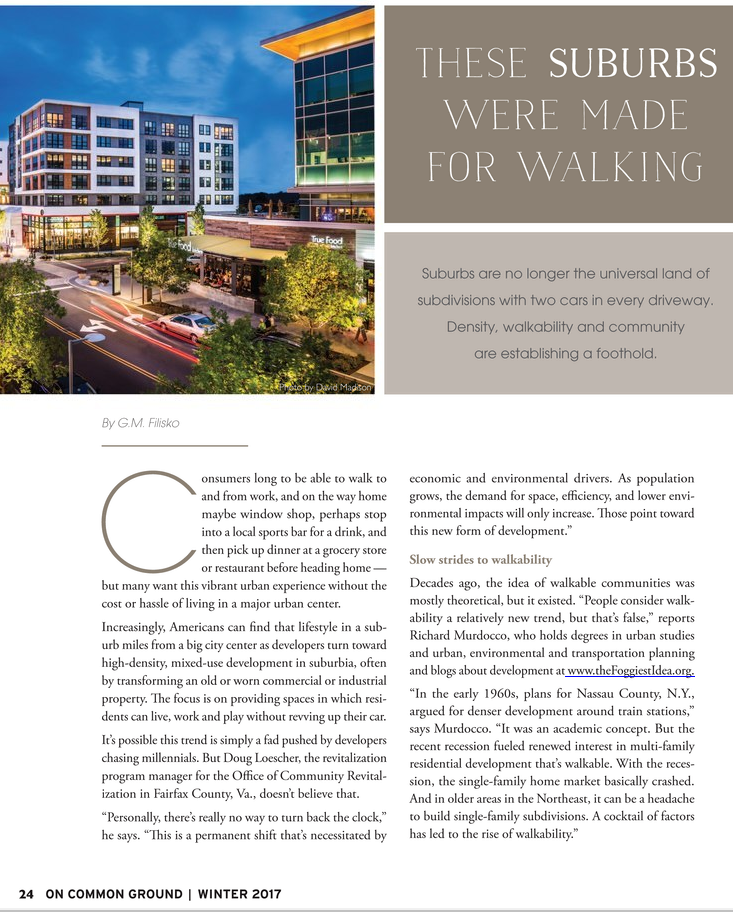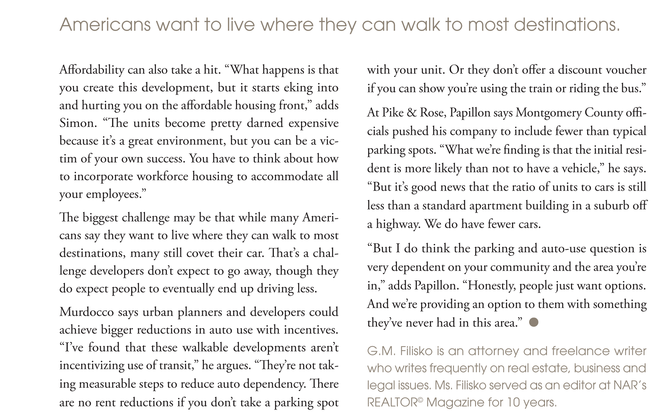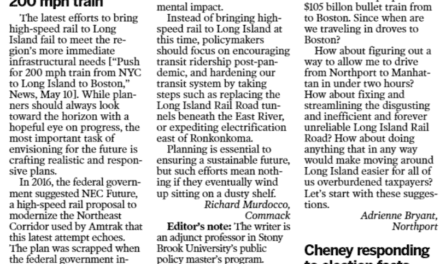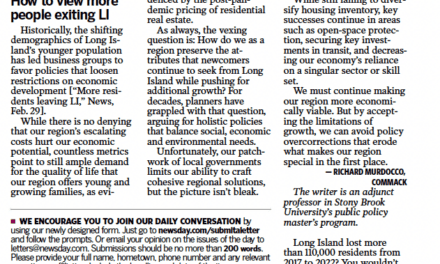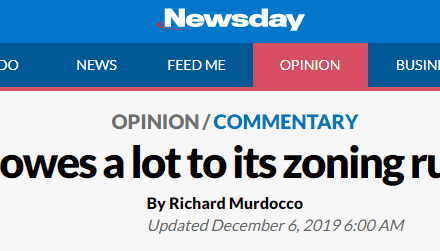The following quote was published in the Winter 2017 edition of On Common Ground, the National Association of Realtor’s free, semi-annual magazine. The publication presents a “wide range of views on smart growth issues, with the goal of encouraging dialog among REALTORS®, elected officials, and other interested citizens.”
You can read the original piece in it’s entirety here.
Slow strides to walkability
Decades ago, the idea of walkable communities was mostly theoretical, but it existed. “People consider walkability a relatively new trend, but that’s false,” reports Richard Murdocco, who holds degrees in urban studies and urban, environmental and transportation planning and blogs about development at www.theFoggiestIdea.org.
“In the early 1960s, plans for Nassau County, N.Y., argued for denser development around train stations,” says Murdocco. “It was an academic concept. But the recent recession fueled renewed interest in multi-family residential development that’s walkable. With the recession, the single-family home market basically crashed. And in older areas in the Northeast, it can be a headache to build single-family subdivisions. A cocktail of factors has led to the rise of walkability.”
The biggest challenge may be that while many Americans say they want to live where they can walk to most destinations, many still covet their car. That’s a challenge developers don’t expect to go away, though they do expect people to eventually end up driving less.
Murdocco says urban planners and developers could achieve bigger reductions in auto use with incentives. “I’ve found that these walkable developments aren’t incentivizing use of transit,” he argues. “They’re not taking measurable steps to reduce auto dependency. There are no rent reductions if you don’t take a parking spot with your unit. Or they don’t offer a discount voucher if you can show you’re using the train or riding the bus.”

